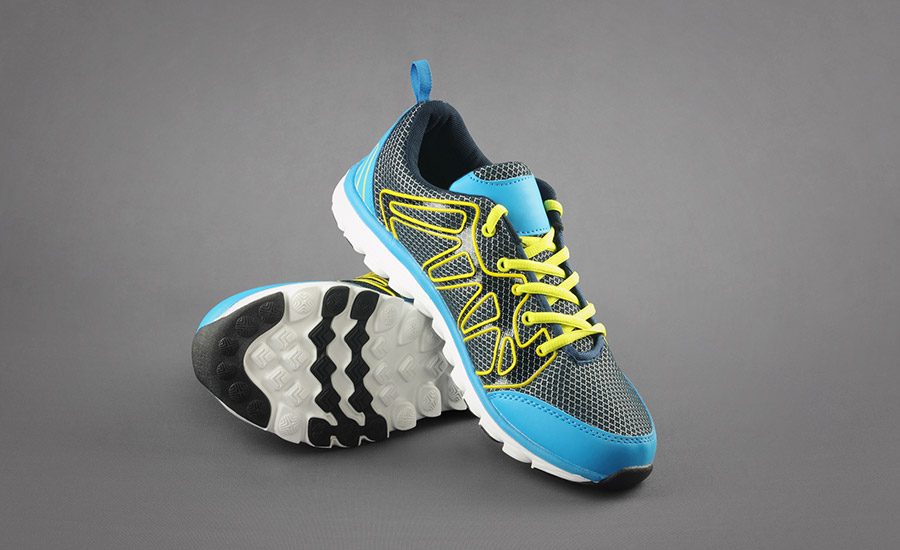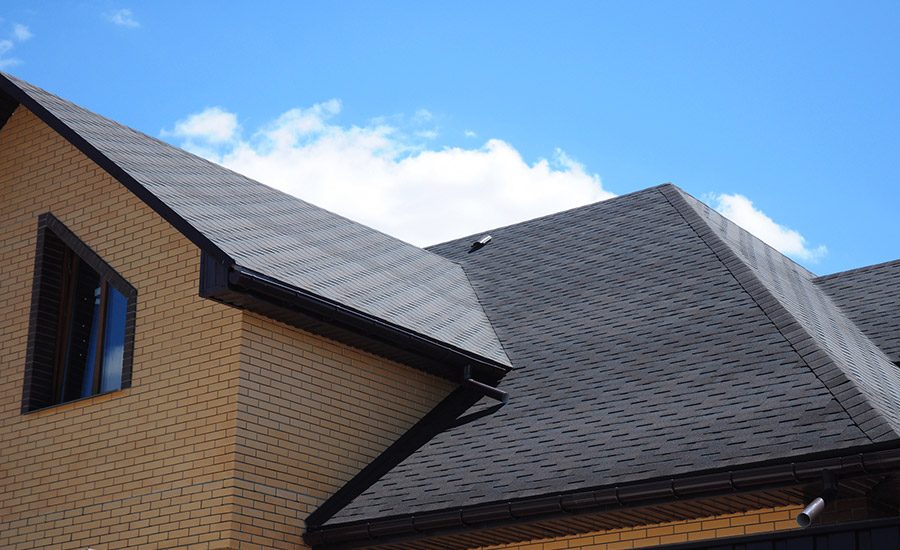Polychloroprene Contact Adhesives
Water-based adhesive systems make inroads into traditional solventborne technology.






Contact adhesives based on polychloroprene exhibit performance advantages over alternative adhesive systems in a wide variety of related applications where quick, high-strength, permanent bonds are needed. A significant advantage of contact adhesives is auto-adhesion, which results in an instant bond with sufficient green strength so that fixturing is unnecessary. Contact adhesives can also be formulated to provide a long open time before the adhesive-coated substrates are combined. This enables assembly operations to pre-coat or stage the preparation of substrates prior to bonding.
Chemistry and Manufacture
Polychloroprene or chloroprene rubber (CR), introduced by DuPont in 1931, was the first synthetic rubber developed that exhibited the elastomeric properties of natural rubber. The new rubber was given the tradename “Duprene” and then renamed Neoprene. It remains one of the most important speciality elastomers with an annual consumption of 300,000 tons worldwide.
The modern chloroprene process is based on the conversion of butadiene into the chloroprene monomer (2-chlorobutadiene-1,3). With the aid of free radical initiators, chloroprene in the form of an aqueous emulsion is converted into homopolymers or, in the presence of co-monomers, into copolymers.
In the production of solid-grade polychloroprene, the latex is coagulated, drawn into a thin sheet, and then chopped and dusted to form chips or granules. Polychloroprene is also produced and sold in latex form, which is used in waterborne adhesives.
Structure
Key roles in changing the molecular structure of polychloroprene are played by the polymerization conditions (polymerization temperature, monomer conversion, polymerization process), polymerization aids (co-monomers, type and amount of molecular weight modifier and emulsifier) and conditions during finishing. The molecular weight of polychloroprene is a function of the conversion level and initiator content.
Another classification of commercially available chloroprenes is the linearity of the backbone. The polychloroprene grades used in solvent-based adhesives are highly linear and soluble. Lower-molecular-weight chloroprenes can be dissolved by simply stirring in solvent, while higher-molecular-weight materials often have to be masticated before easy dissolution is possible. Latex-based polychloroprenes have varying degrees of gel structure and are marginally solvent-soluble. Latex polychloroprenes are often anionically stabilized with rosin acid-based emulsifiers.
Applications
Some 60% of CR production is used in the rubber industry for products such as molded goods, cables, transmission belts and conveyor belts. About one third of CR production is used as a raw material for adhesives (both solvent-based and water-based). The balance of CR production has different latex applications such as dipped articles (e.g., gloves), molded foam and as a rubber modifier for improved performance in asphalt products.
Excellent adhesive properties and formulating latitude at competitive prices vs. other adhesives technologies have contributed to the dominant position of polychloroprene solventborne adhesives in many market segments. Historically, polychloroprene was used as a replacement for natural rubber, which was in short supply during World War II. However, synthetic polychloroprene demonstrated clear performance advantages over adhesives formulated with natural rubber.
Polychloroprene contact adhesives are used for bonding high-pressure laminates, automotive trim, roofing-membrane attachment, furniture, kitchen cabinets, custom display cabinets, interior and exterior panels, wall partitions, shoe soles, and many other applications where quick, high-strength, permanent bonds are needed.
The U.S. shoe industry was the first major market penetrated by polychloroprene contact adhesives. Although this market has declined in the United States during the past 15 years, the shoe industry worldwide still is a major consumer of polychloroprene adhesives.
In the furniture and related industries, a wide range of substrates must be bonded, including wood; metal, such as cold-rolled steel and aluminum; fabric; paper; foam; plastic, such as polyvinyl chloride, polystyrene, polyethylene, polypropylene and acrylonitrile butadiene styrene (ABS); fiberglass; and materials used to construct high-pressure laminates, for example, for countertops. Essentially all furniture made from a laminate of Formica on a less expensive wood base is fabricated with contact adhesives.
In the past, furniture manufacturing has been dominated by one-part contact adhesives dissolved or dispersed in organic solvents, such as chlorinated solvents and low-flash-point organic solvents. Such one-part contact adhesives are convenient to apply. Recently, however, there has been a desire to shift from organic, solvent-based adhesive compositions to aqueous-based or aqueous-dispersed adhesive compositions for environmental, health and safety reasons.
Adhesive Properties
A significant performance advantage of contact adhesives is auto-adhesion. Polychloroprene contact adhesives provide immediate green strength and high ultimate bond strength for efficient assembly. The substrates are coated with adhesive, allowed to dry and then combined under light to moderate pressure. This results in an instant bond. The mechanism is not a simple diffusion process but diffusion with solubility. Therefore, the residual solvent concentration is an important factor. Sufficient green strength is achieved so that the assembled components can undergo finishing operations without additional clamping or fixturing.
The two main criteria that influence the polymer selection when designing a formula for a contact adhesive are the crystallization rate and viscosity.
Crystallization
Crystallization determines the rate of initial strength development. Fast-crystallizing polychloroprene grades give rapid bond-strength development. Crystallinity in a polymer inhibits the diffusion process and hence reduces auto-adhesion. A balance has to be achieved between auto-adhesion characteristics and ultimate mechanical performance.
Unlike chemical crosslinking, crystallization is reversible. The crystallization of polychloroprene is temperature-dependent, being very pronounced at low temperatures, while higher temperatures result in a gradual loss of crystallinity. Adhesives that have crystallized at room temperature de-crystallize at elevated temperatures, losing their strength. This can already be noticed at 40 to 50 degrees C, and as the temperature rises, the thermoplasticity increases. If the bonds are simultaneously subjected to a load, this will eventually result in bond destruction.
Polychloroprene adhesives that have been de-crystallized at elevated temperatures exhibit auto-adhesion. This property is exploited in the production of heat-activated adhesives.
Viscosity
Viscosity influences the inherent strength of the adhesive film, the solution viscosity and solids content. The higher the polymer viscosity or molecular weight, the higher the film strength, the higher the adhesive viscosity, or the lower the solids at a given adhesive viscosity.
Polarity
The polarity of the polychloroprene gives versatility. Polychloroprene rubbers can be dissolved in a wide variety of polar and non-polar organic solvents to provide a range of solution viscosities and drying times, all with good solution stability. Good specific adhesion to a wide range of porous and non-porous substrates can be achieved.
Open Time
Polychloroprene contact adhesives can be formulated to provide a long open time before the adhesive-coated substrates are combined. This time span, commonly referred to as “tack life” or “open time,” is the period within which a satisfactory bond can be formed under contact pressure. Long open times enable assembly operations to pre-coat or stage the preparation of substrates prior to bonding.
Solventborne Adhesive Formulations
Solvent-based polychloroprene contact adhesives are formulated using a polychloroprene rubber, a tackifying resin (most commonly a tertiary-butyl phenolic resin) and antioxidants/acid scavengers, such as metal oxides. Various grades of solid polychloroprene, which generally differ in level of crystallinity, are available for use in solvent-based adhesives.
Solvent selection and adhesive solids will vary depending upon end use and method of application. The selection of the grade of polychloroprene and the tackifier allows the adhesives formulator to design products having specific properties, such as long or short tack or open time, controlled development of ambient- and/or elevated-temperature bond strength, and ultimate peel and shear strength. The cured adhesives are generally resistant to heat, oxidation, water, solvents and other chemicals.
Solvent Selection
Solvent blends are normally used in polychloroprene contact adhesives. Non-flammable chlorinated solvents, once popular, have been replaced due to environmental restrictions. The choice of solvents or a solvent mixture used in the manufacture of adhesives depends not only on their dissolving action but also on evaporation rate. Non-solvents are often added to solvents that dissolve polychloroprene without impairing the dissolving action of the resulting mixtures. The actual rate at which an adhesive dries is also influenced by the solvent retention of the formulation as well as the absorption and permeability of the substrates to be bonded.
Antioxidants and Acid Acceptors
Another common characteristic of adhesive formulations based on polychloroprene is that they require the use of antioxidants and acid acceptors. The adhesives are commonly modified by the incorporation of magnesium oxide and zinc oxide to inhibit dehydrochlorination. An example of this is the use of zinc oxide, which is often used in a dispersed form in polychloroprene-based formulations. The zinc oxide serves to act as an acid acceptor and as a crosslinking agent with carboxyl functional groups to improve heat resistance.
Magnesium oxide and zinc oxide are both acid acceptors for trace amounts of hydrogen chloride evolved during aging. The presence of metal oxides improves the storage stability of the adhesives and the resistance to aging of the bonds. Magnesium oxide will also prevent scorching during mastication. Magnesium oxide and zinc oxide are generally used at about 4 parts per hundred parts rubber (phr) of each.
Historically, the metal oxides were milled into the polychloroprene to ensure a fine dispersion that would stay suspended in the adhesive. With the direct dissolving process that is mainly used today, they have to be dispersed differently. Generally, these products have to be used in a dispersed form, which has the overall effect of reducing the stability of the formulation and increasing its cost. The use of metal oxides with extremely small particle size makes incorporation easier. Pre-reacting the magnesium oxide with reactive alkylphenolic resins can also improve the incorporation into the adhesive. Alternatively, the metal oxides can be dispersed in a master batch (containing the metal oxides at about the 10% to 20% level) that is milled into the polychloroprene.
Resins
Resins are also used in polychloroprene contact adhesives, the most common being the alkyl phenolic resins. These substances have little effect on the final crystallizing of polychloroprene but improve adhesion characteristics. They are normally added at about 10-50 phr.
Tertiary-butyl phenolic resins improve both the auto-adhesive and the oxidative stability of the adhesive. The free methylol groups on the resin react with the magnesium oxide present to form a high-melting-point resinate that also improves the heat resistance. Adhesive formulations containing these resins have high initial strength, are rapid-setting and have excellent final bond strength, but their tack range is limited compared to other resins.
As alternatives to the alkyl phenolics, terpene phenolic resins, rosin-modified phenolic resins, rosin esters, and hydrocarbon and coumarone resins can be added to improve the tack and adhesion. Coumarone resins and rosin esters with a low melting point can improve the auto-adhesive characteristics but only by sacrificing heat resistance and oxidative stability. Less tack but greater strength is obtained with terpene phenolic resins, rosin-modified phenolic resins and rosin esters with a relatively high melting point.
The aging properties of bonds produced from polychloroprene adhesives are influenced by the resins incorporated. Resins sensitive to oxidation, such as rosin esters and coumarone resins, cause embrittlement or softening in adhesive films within a relatively short period of time. These resins must therefore only be used in combination with suitable antioxidants. It is likewise advisable to use antioxidants when terpene phenolic resins are employed. Alkyl phenolic resins have no undesirable aging effect on bonds obtained with polychloroprene adhesives.
The thermal stability of bonds can be considerably improved by adding a polyisocyanate crosslinker to the adhesive. The crosslinking of the adhesive reduces its thermoplasticity. The addition of polyisocyanate crosslinker not only raises the thermal stability but also improves the cohesive strength and in many cases significantly increases the adhesion to certain substrates while improving solvent resistance. Polyisocyanates must be added to the adhesive solution immediately before use. Resins reacting with polyisocyanate, such as phenolic resins, should be avoided. The pot life of an adhesive to after-addition of a polyisocyanate crosslinker is usually several hours before the reaction proceeds to the point where gelling occurs. The pot life depends largely on the composition of the adhesive solution.
Good heat resistance is important in footwear for tropical countries, in flooring materials in the vicinity of radiators or dark flooring materials that are exposed directly to sunlight, and in laminated kitchen counters (hot pots and pans, vicinity of stoves). Heat resistance is also important in many automotive-trim applications that must maintain bond integrity through heat-age cycles (often in excess of 80 degrees C).
Waterborne Adhesive Formulations
Historically, water-based systems were sensitive to operating conditions. As a result, their bonding properties were inconsistent. The stability of polychloroprene latices in combination with other commonly used ingredients necessary in adhesive compositions has been a general problem. In recent years, latex compositions with improved stability have become available. They are generally based on polychloroprene-methacrylic acid copolymers stabilized with partially hydrolyzed polyvinyl alcohol.
Many factors have limited the use of waterborne adhesive formulations. They have a major disadvantage, namely the slow evaporation of the water. It takes a waterborne adhesive much longer to dry at ambient conditions than a solvent-based adhesive. Attempts to provide them in one-part form have achieved only gradual industry acceptance since they have had longer dry times than conventional, solvent-based adhesives, as well as a relatively slow rate of bond-strength development. Quick drying of a latex-based system can only be achieved by an investment in drying equipment.
The contact bond properties of polychloroprene latices are not as good as solvent-based polychloroprene adhesives in several respects. The difference in auto-adhesion properties gives lower initial bond strength and makes bonding at low pressures difficult. The contactability of the adhesive films is often insufficient after drying. Waterborne systems lack the crystallization-inhibiting and tackifying effect of a solvent remaining in the film. Heat activation prior to bonding is often necessary.
Adhesive Strength
To overcome such limitations, two-part aqueous-dispersed adhesive systems have been developed that demonstrate high adhesive strength within seconds of spraying. The adhesive composition is one part of the two-part system with an external coagulant as the second part in a predetermined ratio. Coagulants such as citric acid, lactic acid, acetic acid or zinc sulfate are typically used.
The two parts are combined in a spray-mixing process that involves the addition of the coagulant at the spray head. Both parts are conveyed separately into a spray gun and become mixed in the spray. Since the components only come into contact with each other in the spray, there is no need to be concerned about pot life.
Heat Resistance
The heat resistance of adhesives based on polychloroprene latices is generally lower than solvent-based adhesives because of the presence of surface-active ingredients used to emulsify the latex, tackifiers and other compounding ingredients. Also the high heat resistance achieved with solventborne CR contact adhesives through the addition of an alkylphenol-magnesium chelate complex is not possible in water-based systems. New grades of homopolymer polychloroprene latex have recently been introduced with increased chain crosslinking that are relatively low in crystallinity and exhibit improved heat resistance. When compounded with a terpene phenolic tackifier, they give a high softening point comparable to that of solventborne polychloroprene adhesives.
Peel Strength
Many water-based adhesives formulated from polychloroprene latices do not have good initial peel strength. Adhesives based on polychloroprene latex with increased chain crosslinking blended with low-crystallinity polychloroprene latex containing increased chain branching have demonstrated both improved heat resistance and excellent peel strength.
Improving Properties by Crosslinking
Increasing the heat resistance of waterborne systems to the level achievable with two-component, crosslinked, solventborne CR adhesives is another problem recently addressed. Aromatic polyisocyanates and hexamethylene diisocyanate (HDI) trimers are unsuitable for crosslinking alkaline polychloroprene latices because they cause coagulation of the latex. With the availability of dispersions of isophorone diisocyanate (IPDI) trimer, a monomeric cycloaliphatic diisocyanate, a sufficiently long pot life without coagulation has been demonstrated in a waterborne system. In combination with polychloroprene latex with a significantly higher amount of hydroxyl groups in the polymer chains, crosslinked adhesives can be made. The use of such isocyanates allows a crosslinking reaction to take place at room temperature within a relatively short time. Bond strength and heat-resistance properties comparable to isocyanate-crosslinked solventborne systems can be achieved.
Improving Properties with Acrylics
Many of the commercially available water-based contact adhesives are based on polychloroprene latex and acrylic/vinyl acrylic type emulsions. Blends of polychloroprenes with soft vinyl acrylics produce desirable synergistic effects. The acrylate dispersion provides some initial tack and also a destabilizing effect that accelerates coagulation.
Status of Waterborne Systems
Recent developments in polychloroprene homopolymer and copolymer latices with varying molecular structure have demonstrated improved performance approaching that of solventborne systems.
Two-part waterborne adhesives utilizing the spray-mixing system have improved the application and efficacy of waterborne adhesives. However, they are not entirely satisfactory. The co-spraying equipment is expensive, the equipment requires maintenance and the ratio of the two parts (the coagulant and the adhesive composition) must be monitored during application. Thus, there is a need for a true, one-part, aqueous-based, fast-setting contact adhesive.
For more information, call (330) 794-6618, email seand@ardl.com or visit www.ardl.com.
References
- Steinfink, M., Adhesive Materials (1976), Chapter 21, Neoprene Adhesives: Solvent and Latex, pp. 343–367.
- Pocius, Alphonsus V., Adhesion and Adhesives Technology: An Introduction, 2nd Edition. Hanser Gardner Publications, 2002.
- Lyons, Donald E. and Christell, Lance A., Applications for Polychloroprene Adhesives, Adhesives & Sealants Industry, February 1998, pp. 40-43.
- Galiatsatos, Vassilios, Polychloroprene, Polymer Data Handbook, Oxford University Press, Inc., 1999.
- Bayer Corp., Baypren Chloroprene Rubber in Adhesive Applications, 1999.
- Musch, R., New Polychloroprenes Expand Areas of Application, FEICA World Adhesives Conference, 2001.
- Jansen, C. E., Hold Your Water, New Polychloroprene Latices for Adhesive Applications, Adhesives Age, November 2001, pp. 30–36.
Looking for a reprint of this article?
From high-res PDFs to custom plaques, order your copy today!








